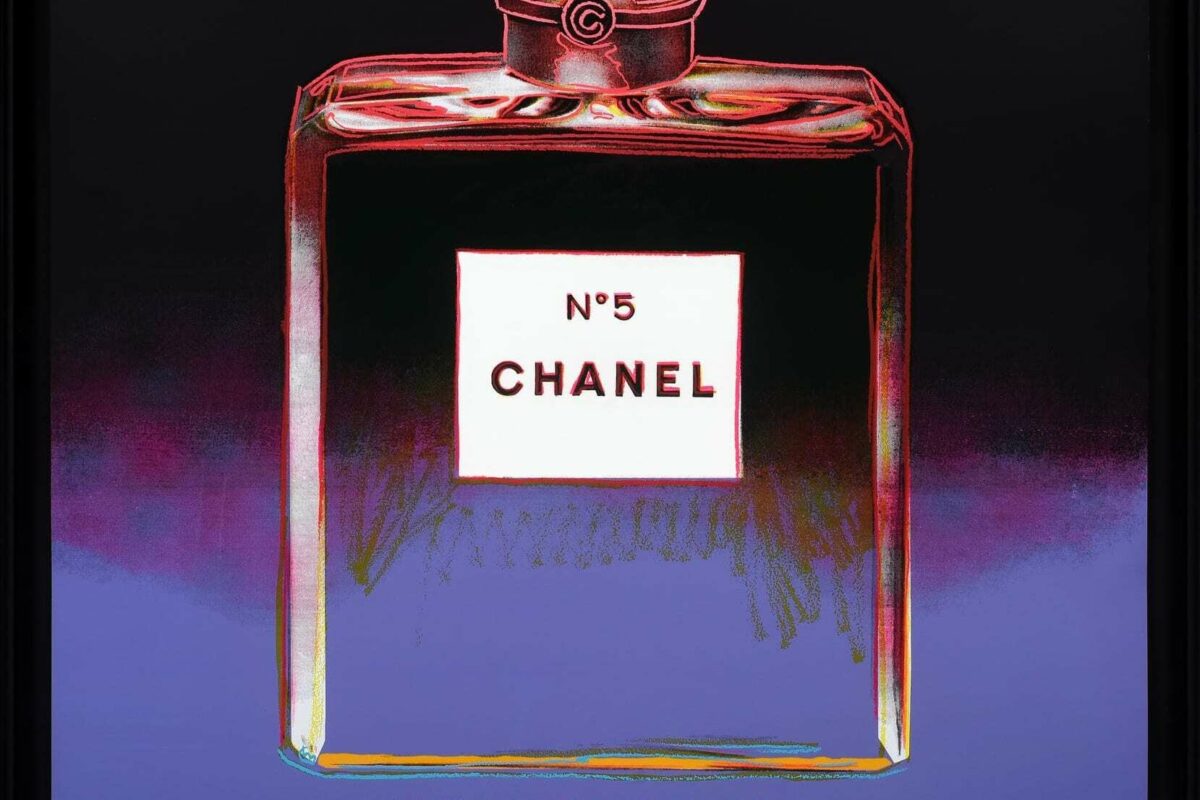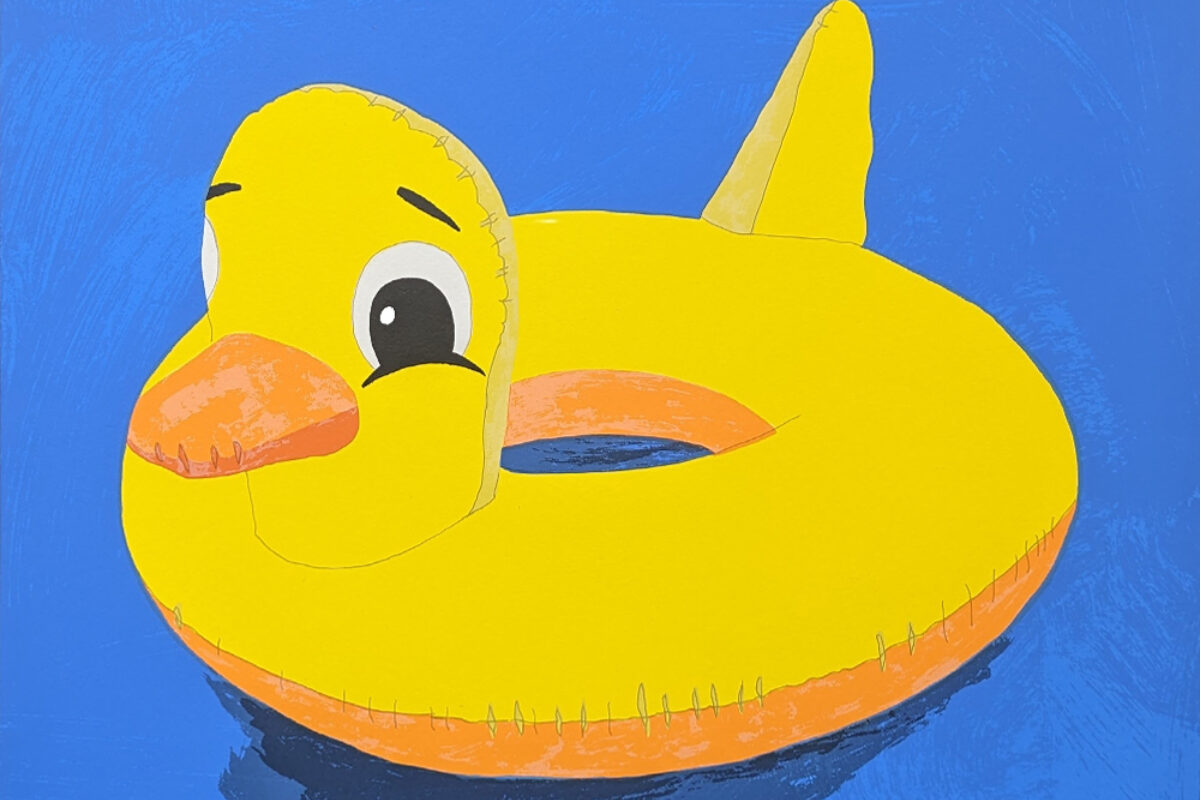From Takashi Murakami’s riffs on recurring, cartoon-like characters to Yayoi Kusama’s many-dotted pumpkins, some of the gallery’s best sellers are works that originated in Japan. Kusama is now the world’s most popular living artist and a sure thing for curators searching for bankability, as her sell out show at the Tate Modern proves. Meanwhile, Murakami’s many collabs continue apace (most recently on t-shirts with Uniqlo and Billie Eilish and a print run with Absolut Art), illustrating his enduring popularity. How did these artists penetrate the international scene and influence its path from late 20th-century modern art to the present day? We take a look in more detail below.

Yayoi Kusama's Infinity Mirrored Room - Filled with the Brilliance of Life, 2011/2017 at the Tate.
Yayoi Kusama
Superflat goes supersonic
Led by Takashi Murakami, the ‘Superflat’ movement was a key moment in the stratospheric rise of Japanese contemporary art. It exploded at the beginning of the 21st-century, drawing on age-old techniques and practices as well as the world of otaku (extreme anime and manga nerds), while at the same time bringing Japanese art to new audiences.
Central to the movement was the traditionally Japanese 2D perspective. But in Superflat, Japanese aesthetics – which had long been revered – were combined with easily accessible contemporary cultural references, from porn to Disney via album art.
The movement signalled a new cultural boom for Japan, and revolutionised the art market in the West too: acting as a natural extension of the traditional Japanese notion that artists and makers were to be revered in equal measure, it transcended the boundary between commercial and gallery work.
Artists associated with Superflat also include Yoshimoto Nara, though his works do not quite conform to the definition laid out by Murakami. While they often display historical references, they are freer and less reverential in style.

This Merciless World by Takashi Murakami, 2014.
Takashi Murakami/Kaikai Kiki Co., Ltd.
Cute and cuddly
What Nara’s works do have in common with other Superflat images is their cuteness (think outsized heads and eyes and squat little bodies). By the time Superflat was born, the world had fallen hard for kawaii (literally the Japanese word for ‘cute’) and was ready to embrace art that echoed its innocent familiarity. What started out as a niche movement influenced by Japanese comic style of the 1950s, 60s and 70s, soon became a sweeping trend amongst the country’s teenagers. Outside Japan, Kawaii was embraced for its adorable aesthetic. Friendly, Instagrammable and relatable, it gave the country significant mass appeal to a new generation overseas.

Missing in Action–Girl Meets Boy– by Yoshitomo Nara, 2005.
Yoshitaka Uchida, Yoshitomo Nara.
A buyer’s market
Using similar visual shortcuts to kawaii, Japanese artists were able to capitalise on this through a series of spin-offs that would see them penetrate the commercial market and bridge the divide between high and low culture. Some of the artists, who were not precious about commercial hook-ups, began creating coveted luxury goods (such as Murakami’s much-loved Louis Vuitton bags). These brought their work to wider audiences, who had plenty of spending power but limited interest in the hard-to-penetrate contemporary art that was popular among western gallerists at the time. The work (whether in the gallery or on pottery, watches and clothing) had an elusive feel-good factor and an instantly recognisable style, meaning purchasers could reinforce their status through ownership.
Critics believe the influence of kawaii has advanced the reputation of more artists than you might expect. Art News has even credited the movement with helping to cement Yayoi Kusama’s popularity, arguing that she is cute and cartoon-like in her own right: a polka-dot wearing recluse who has created her own brand, with her eccentric character providing its raison d’etre.
Exploding markets
The 21st century has also seen a significant shift in the geographical success of auction houses, with Hong Kong fast becoming one of the world’s most valuable art centres. Auctions in the city state now sometimes garner better results than elsewhere – especially when it comes to pieces with a more commercial bent. To some commentators, the Hong Kong sales are hipper than their more established counterparts, offering up works by upcoming artists and the coolest names in the business. Hong Kong commands the world’s highest prices for Japanese artists: In 2019, Nara’s Knife Behind Back sold for almost $25 million at Sotheby’s Hong Kong, a record for his work by some degree. Hong Kong also holds the record for works by Kusama, selling a white infinity net painting for $7.9 million in the same year. As the shift in the global market continues, we can expect even more success for Japanese artists in the future.

An image from the Louis Vuitton x Murakami campaign.
Mert Alas for Lous Vuitton, British Vogue.
More editorials about Takashi Murakami
Art Market
Market Watch: Red-Chip Art
19 Mar 2025 | 2 min read

Art Market
Market Watch: Auction highlights | RESULTS Part 2
7 Mar 2025 | 2 min read

Art Market
Market Watch: Auction highlights | Part 2
1 Mar 2025 | 2 min read

Art Market
Market Watch: Auction highlights | Part 1
24 Feb 2025 | 2 min read

Artists
Our Top Exhibitions of 2023
21 Dec 2023 | 5 min read
Art Market
Big In Japan
18 Nov 2021
Artists
Meet the Cast of Takashi Murakami's Work
30 May 2021
Artists
They Said What | Part II
16 Mar 2021
Lifestyle
Pretty As A Picture
14 Feb 2021
More from Art Market
Art Market
The Hang | Your monthly round up of Art Market based News
31 Jul 2025 | 4 min read

Art Market
The Summer Window: 5 Reasons Why Summer is the Best Time to Buy Art
22 Jul 2025

Art Market
Warhol's Star Portraiture Proves Successful at Auction
29 May 2025 | 3 min read

Art Market
Banksy’s Heartfelt Mural Returns to NYC
8 May 2025

Art Market
Art Market News: Trump's Tariffs
10 Apr 2025 | 3 min read

Art Market
Market Watch: Banksy Auction Highlights
2 Apr 2025 | 2 min read

Art Market
Market Watch: Red-Chip Art
19 Mar 2025 | 2 min read

Art Market
Market Watch: Auction highlights | RESULTS Part 2
7 Mar 2025 | 2 min read

Art Market
Warhol's Market Remains Robust
6 Mar 2025 | 3 min read
